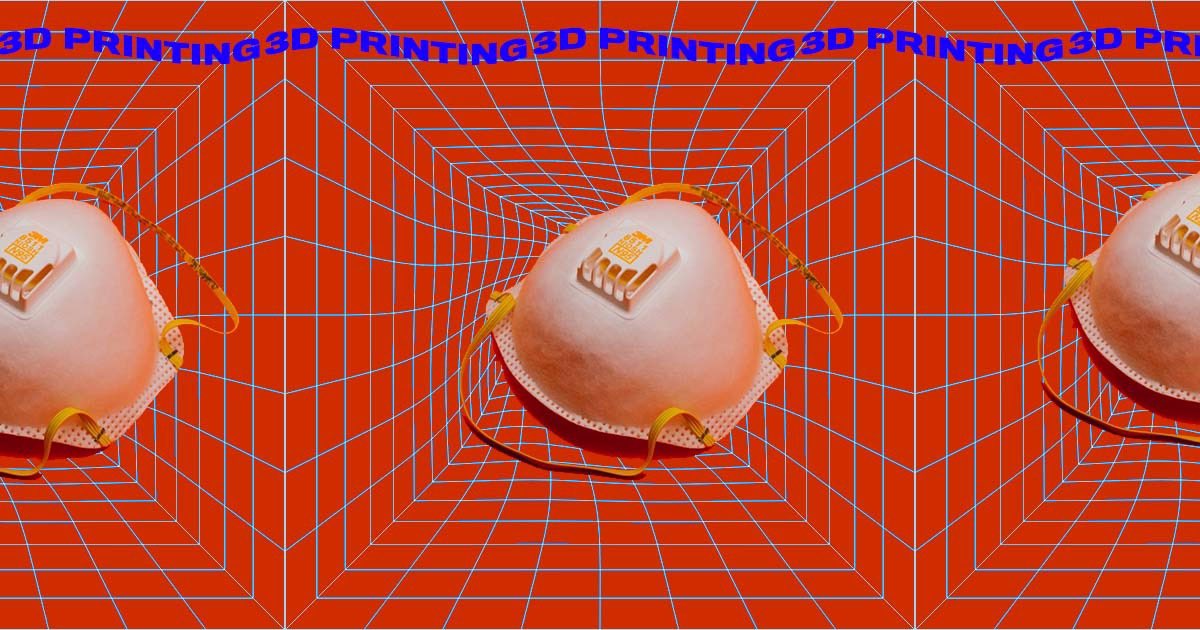As frontline health workers face the pandemic on a day-to-day basis, their risks continue to pile with the upward slope of cases. Along with the shortage of face masks and other personal protective equipment (PPE), hospitals have resorted to asking for protective gear from anyone who can offer. Fortunately, technology has one solution up its sleeve: 3D printing.
News broke of the PPE shortage last week, as one doctor from the Jose R. Reyes Memorial Medical Center disclosed to Inquirer that staff members have been buying their own masks since the gear ran out. The hospital is just beside the Department of Health’s head office, in a twist of unsurprising irony. The same goes for other hospitals like Rizal Medical Center and Philippine General Hospital (PGH), as a supplier reportedly failed to deliver 90,000 masks.
And just as with any shortfalls of the powers-that-be—thanks for being there when no one else was, university researchers—people are stepping up. Specifically, people with 3D printers.
Two of them are BS Chemistry graduates of UP Diliman, who share that these 3D-printed face mask alternatives are reusable and biodegradable, made from polylactic acid (PLA) and attached by acetate films.
Read more: These UP-designed sanitation tents are free for the public
3D printing isn’t limited to face masks. Printer maker HP has been constructing plastic door handle adaptors with easy elbow opening, “to prevent further spread of the virus.” Others have also been looking into creating hospital equipment like ventilator valves and breathing filters. However, this doesn’t mean that 3D printer users can build a whole hospital set from scratch—some of these items require specialized equipment.
Volunteers have taken on the responsibility of producing 3D-printed parts, communicating with the health sector and frontliners, or assisting with assembly and procurement of supplies.
One group taking part in this project is 3D Printing for a Cause PH, composed of the country’s 3D printing community. To create the makeshift mask, the group uses an acetate sheet and a piece of garter, which are then attached to the 3D-printed frame. Although they don’t claim that the face shields are industrial grade, it’s a decent alternative while hospitals are waiting for the PPEs to stock.
“We currently have 417 members in the group and 90+ registered volunteers,” the group says. “Volunteers have taken on the responsibility of producing 3D-printed parts, communicating with the health sector and frontliners, or assisting with assembly and procurement of supplies.”
Read more: Face masks needed: call for protective equipment donations from hospitals and organizations
With the whole Luzon under lockdown, sourcing materials gets tricky. This is where volunteers come in to the picture. “We rely on our community of members who actually have their own personal stock of materials for 3D printing. As for the acetates and garters, some volunteers were able to procure and get donations,” they say. “Procurement and logistics has been difficult, but we are hoping that as the group grows, we can find more supplies and find support for transporting the donations from city to city.”
“Procurement and logistics has been difficult, but we are hoping that as the group grows, we can find more supplies and find support for transporting the donations from city to city,” says 3D Printing for a Cause PH.
Several hospitals and medical centers have become regulars to their cause. “Frontliners and medical institutions make a request through the group, and this is recorded in our database/tracker where the volunteers can pledge their donation for a request near their area of residence,” the group says. “The hospitals arrange for pick up once their request is available since movement is very limited now.”
Folks with 3D printers are encouraged to take part in this project and focus their efforts on relieving the shortage of face masks. You can print shield frames using an open-source design and attach it with a sheet of acetate to act as a face shield. 3D Printing for a Cause is also calling for local owners to join their Facebook group.
The face shield has a fairly simple design, but it’s a great deal of help for our frontliners. Even if you have no 3D printer at your disposal, you can help the cause by chipping in unused acetate films, 3D printing filament (PLA, ABS, PETG) and garters to the running project.
Art by Zaila Mae Urmeneta


